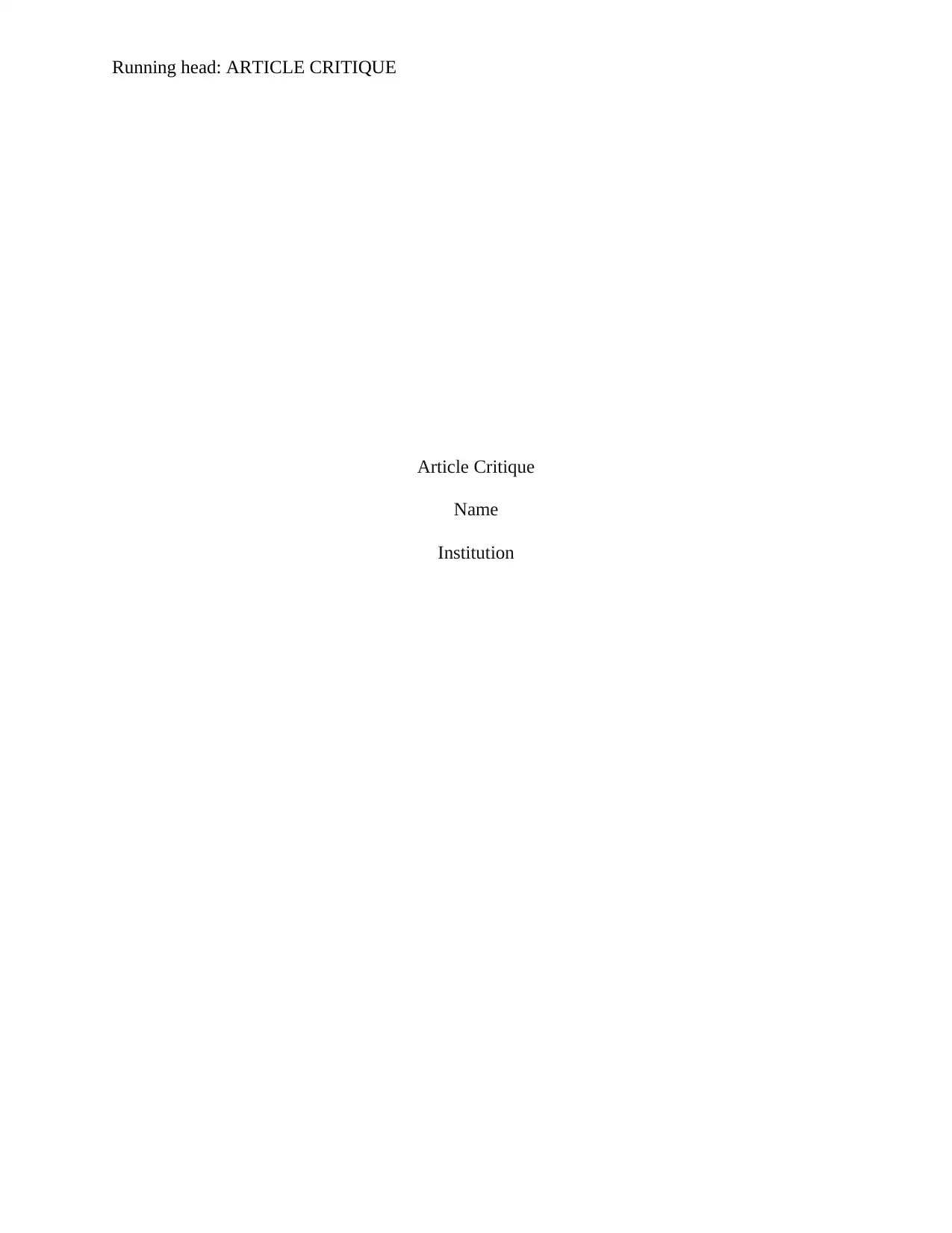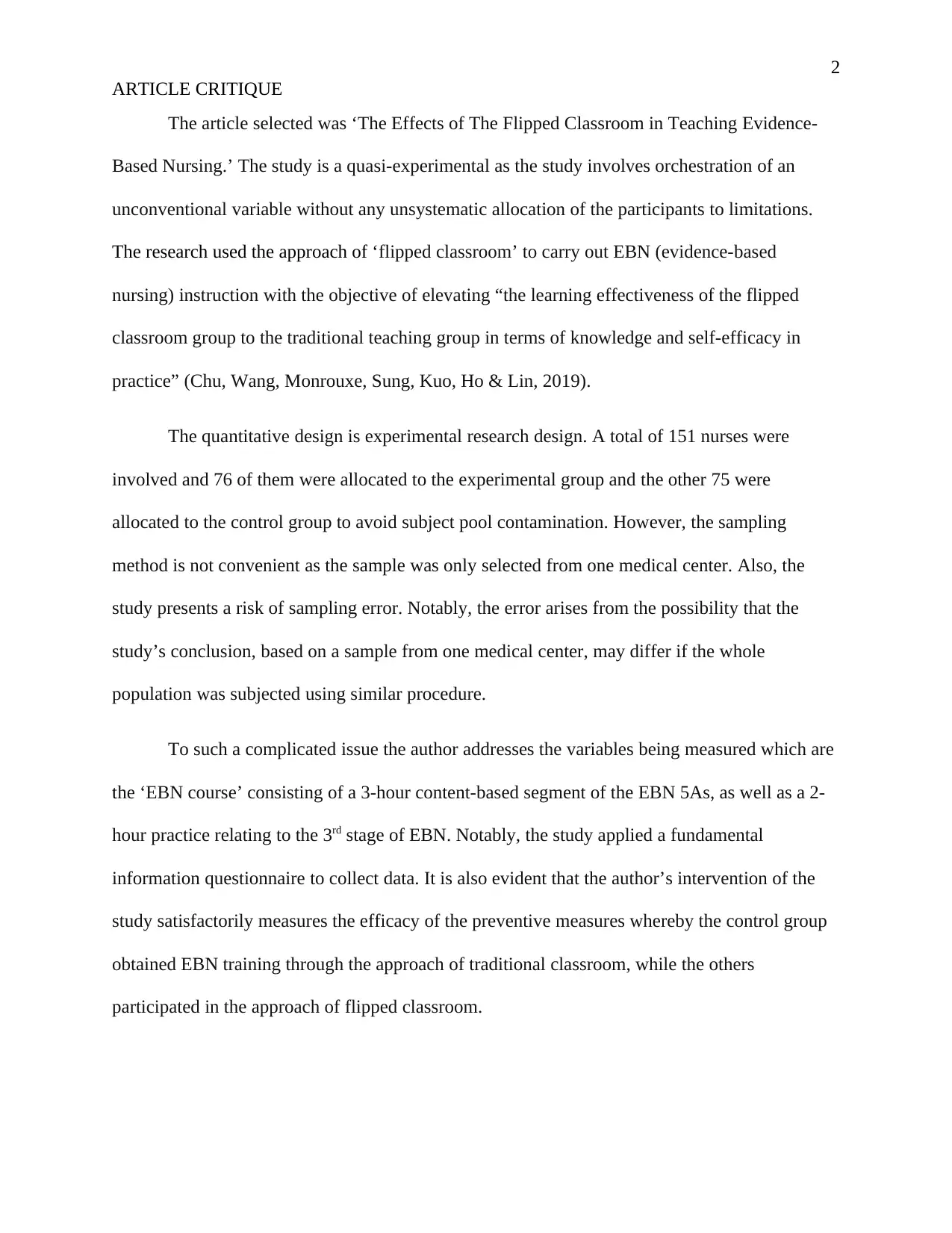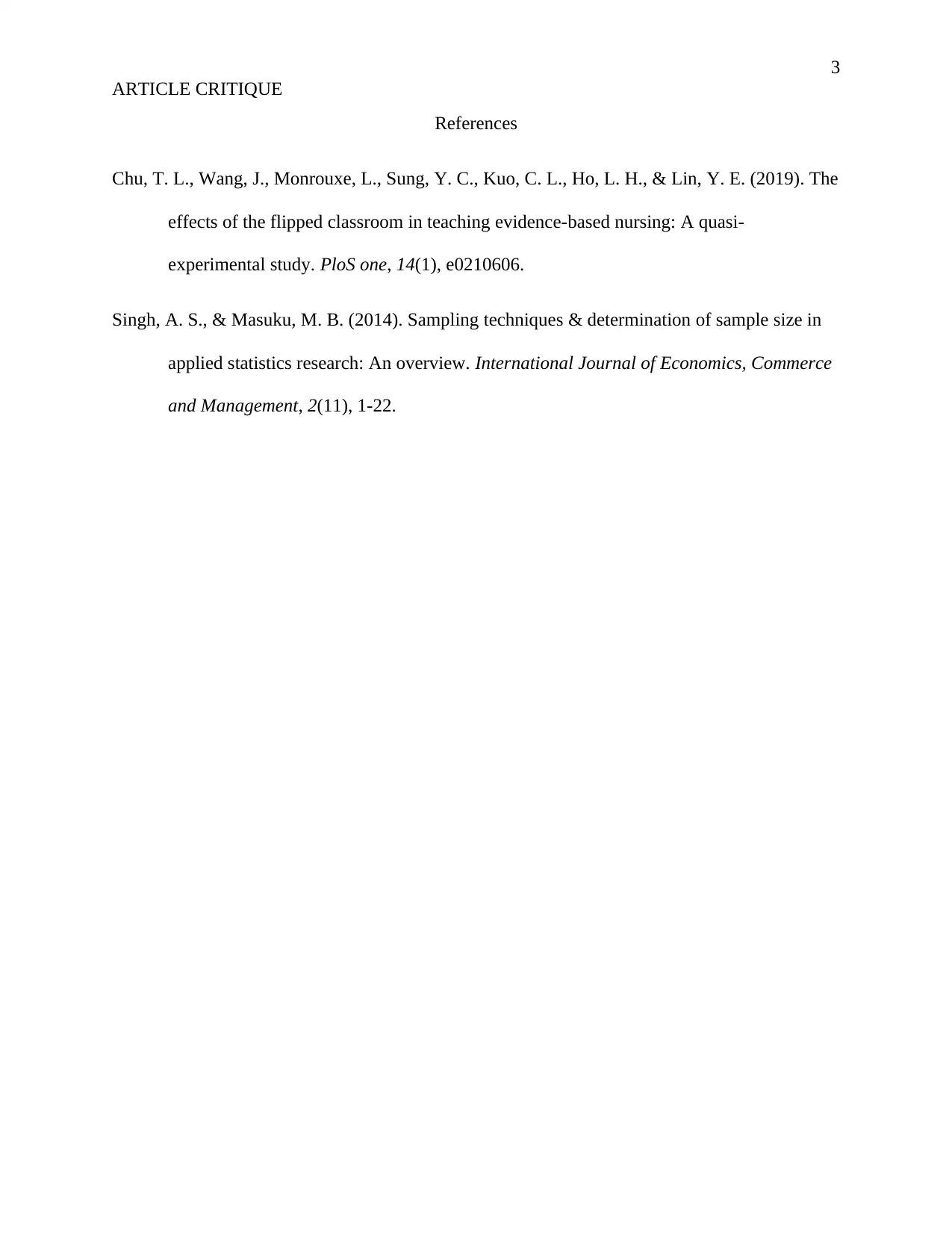Article Critique: Flipped Classroom's Impact on EBN Practices
VerifiedAdded on 2022/10/17
|3
|436
|13
Report
AI Summary
This report presents an article critique of a study examining the effectiveness of the flipped classroom approach in teaching evidence-based nursing (EBN). The study, a quasi-experimental design, investigated the impact of this method on nurses' knowledge and self-efficacy. The research involved a control group receiving traditional classroom instruction and an experimental group using the flipped classroom model. The critique addresses the study's methodology, including its quantitative design, sample size, and potential sampling errors, as well as the variables measured. The author's intervention, which involved both groups, is evaluated for its efficacy. Furthermore, the report assesses the study's conclusions and provides insights into the application of flipped classrooms in nursing education. References include the original research article and a paper on sampling techniques.
1 out of 3




![[object Object]](/_next/static/media/star-bottom.7253800d.svg)